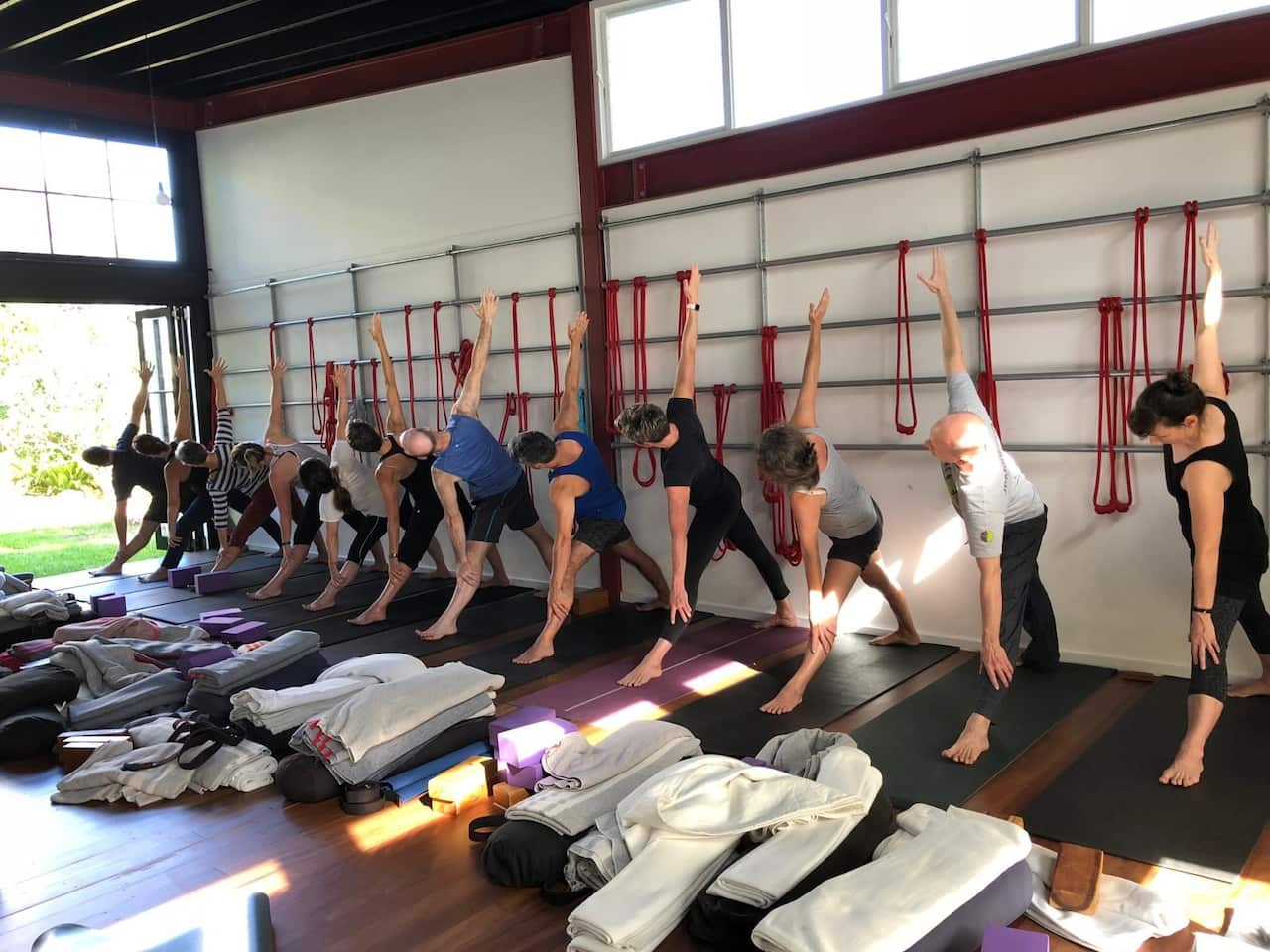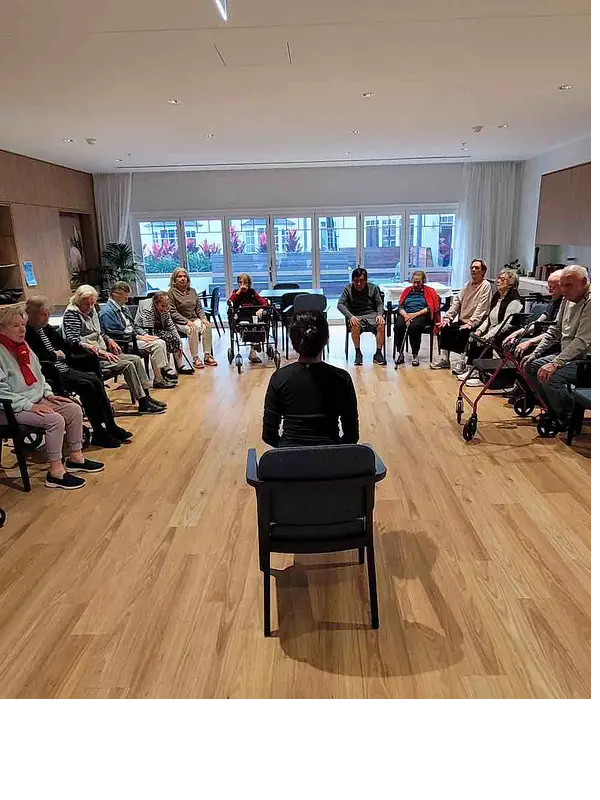When Margaret Kirkwood broke her hip falling up the stairs of her home in Sydney, she could have become a statistic: falls are the leading cause of hospitalisation and injury deaths in Australia.
Instead, the 83-year-old made a remarkable recovery. The day following her surgery, she was standing. Less than two weeks later, she was walking with the aid of a single crutch.
"The doctor said, 'You're a textbook case'. Your body is in fantastic condition," she said.
Kirkwood credited her recovery to her yoga practice.
For the past 25 years, she has attended Iyengar Yoga classes twice a week.
Kirkwood said it taught her about her body and has given her strength, which she notices while moving about the house and doing chores.
"If I weren't strong, I would have had a really bad fall," she said.
However, a surprising new study from The University of Sydney has found that Iyengar yoga — a distinct form of yoga that uses props and is popular among older people — should not be recommended as a fall prevention measure.
In the biggest clinical trial investigating the effects of yoga on falls, researchers found that while yoga improved self-confidence and mobility, older people who practised yoga experienced a significantly higher incidence of falls.
An unexpected result
The study recruited 700 people over the age of 60 and invited them to participate in two yoga classes each week for a year.
Half of the cohort did Iyengar yoga, while the other half did seated breathing and stretching. Researchers then tracked the number of falls experienced by both groups over the course of that year.

There were limitations to the study, including the COVID-19 pandemic, which forced the classes online. Source: Supplied / Sue-Ellen Kohler
"We have a lot of evidence that exercise, challenges, and balance can prevent falls ... We also know that older people like to do yoga, so we thought it's important to know whether it also prevents falls," Tiedemann said.
The yoga cohort reported 33 per cent higher rates of falls than the non-yoga-based group, with 276 falls compared to 164. However, there was only a slight increase in the rate of injury, with only 15 per cent of the yoga group and 13 per cent of the non-yoga group experiencing cuts, grazes, dislocations, sprains, fractures, or brain injury as a result of the fall.
"It's a combination of the environment, your behaviour, and your physiology which determines if you fall or not," Tiedemann explained.
"In our study, we identified that people who did the yoga-based exercise showed an improvement in their balance confidence ... So we think what has happened is that people have felt more confident in their abilities, and there was also an indication that they moved about more."
Tiedemann pointed out that the trial had limitations. Initially, the classes were held face-to-face, but when COVID-19 emerged, they transitioned online.
"People might not have pushed themselves as far as they would if they had an instructor in the room," Tiedemann said.
Yoga can't 'prevent falls forever'
Jean Leow runs Yoga Ink, teaching Iyengar to seniors in Sydney's south and in aged care facilities across the city.
"I love working with seniors. When they come to a class, they really take it on and I'm surprised by how well they adapt," she said.

Jean Leow teaches Iyengar classes customised for the needs of her senior students. Source: Supplied / Jean Leow
"I can't emphasise enough the amount of customisation we as teachers have to be accountable for," she said.
Sue-ellen Kohler, who has been a yoga instructor for 30 years and teaches at Black Lotus in Sydney's inner-west, expressed concern that having the classes online may have influenced the results.
"The teacher needs to actually look at how the body is working and how the body is using its muscles. Online, you don't get any of that. They're just going to be making shapes," she said.
Leow also said it's important to recognise the purpose of yoga isn't to "prevent falls forever".
"The aim is to help the older person understand what to do when they do fall, and how to correct themselves so they can arrest it and rebalance. That means they may still fall, but they're not going to hurt themselves in the process," she said.
"For my own students, some of them are avid travellers, some are gardeners. How do they recover from the things they love doing and protect their bodies enough to sustain their lifestyle?"
Preventing falls
Every day, 14 Australians aged 65 and over will die from a fall, according to the Falls, Balance and Injury Research Centre at Neuroscience Research Australia. A further 364 people will be hospitalised due to a fall each day.
In June, the Australian Commission on Safety and Quality in Health Care updated its falls guidelines for the first time since 2009. It emphasised the benefits of exercise for older people, recommending that two to three hours of exercise per week is crucial in preventing falls. It stated that the primary targets should be balance, mobility, and strength.
Tiedemann said for people whose main aim is fall prevention, there is evidence to show that activities like Tai Chi and classes that focus on functional balance training can be effective.
"I would not be promoting this type of yoga program for falls as the outcome, but it did have other benefits. People were more active and more likely to reach the goals they set," she said.
She pointed out that some of the participants in the study enjoyed yoga so much they continued after the program ended.
Kirkwood, who is still recovering from her fall, believes yoga is still "perfect" for her.
"I wouldn't be like this without Iyengar. I've got a really good teacher."


